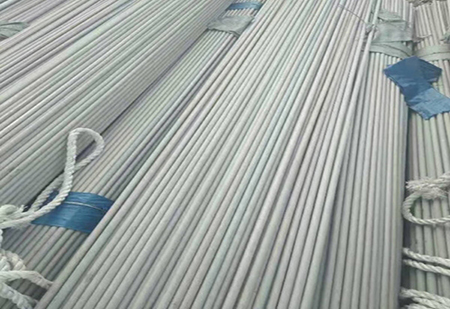What is the difference between Schedule 40 and 80 stainless steel pipe?
Stainless steel pipes have earned their reputation as the go-to choice for plumbing applications due to their exceptional durability and corrosion resistance. However, within the realm of stainless steel piping, there are two prominent schedules that often lead to confusion for those not well-versed in the terminology: Schedule 40 and Schedule 80.
Schedule 40 and Schedule 80: The Wall Thickness Dilemma
The primary difference between Schedule 40 and Schedule 80 stainless steel pipes lies in their wall thickness. Stainless steel pipe schedule 40 has thinner walls, while Schedule 80 pipes have thicker walls. The variation in wall thickness directly impacts their performance capabilities, making it essential to select the most suitable option for your specific plumbing requirements.
Strength and Pressure Handling
Schedule 40 stainless steel pipes are suitable for applications with relatively low-pressure demands, such as residential plumbing. They offer excellent strength while being lightweight and easy to handle. However, for industrial or high-pressure applications, Schedule 80 pipes are the preferred choice. Their thicker walls grant them superior strength and the ability to handle higher pressures with ease. It's crucial to assess the pressure requirements of your project before making a selection.
Flow Capacity and Restrictions
While Schedule 80 pipes excel in strength and pressure handling, they may present some limitations in flow capacity due to their thicker walls. If your project demands high flow rates, Stainless steel pipe schedule 40 might be more appropriate. Balancing the desired flow capacity with the necessary pressure handling is essential for an efficient plumbing system.
Budget Considerations
Cost can be a significant factor in the decision-making process. Schedule 40 stainless steel pipes are generally more cost-effective than their Schedule 80 counterparts because they require less material for production. However, cost considerations should always be balanced with project requirements. Sometimes, the additional investment in Schedule 80 pipes may prove beneficial for long-term performance and durability.
Corrosion Resistance
One area where both Schedule 40 and Schedule 80 pipes shine is their exceptional corrosion resistance. Thanks to the inherent properties of stainless steel, both schedules offer excellent protection against rust and deterioration, ensuring a long-lasting and reliable plumbing system.
Selecting the Optimal Stainless Steel Pipe for Your Project
When choosing between Schedule 40 and Schedule 80 stainless steel pipes, carefully assess the specific demands of your plumbing project. Consider factors such as pressure requirements, flow capacity, and budget constraints. In some cases, a combination of both schedules might be the ideal solution, using stainless steel pipe schedule 40 for less demanding segments and Schedule 80 pipes for areas requiring extra strength.








